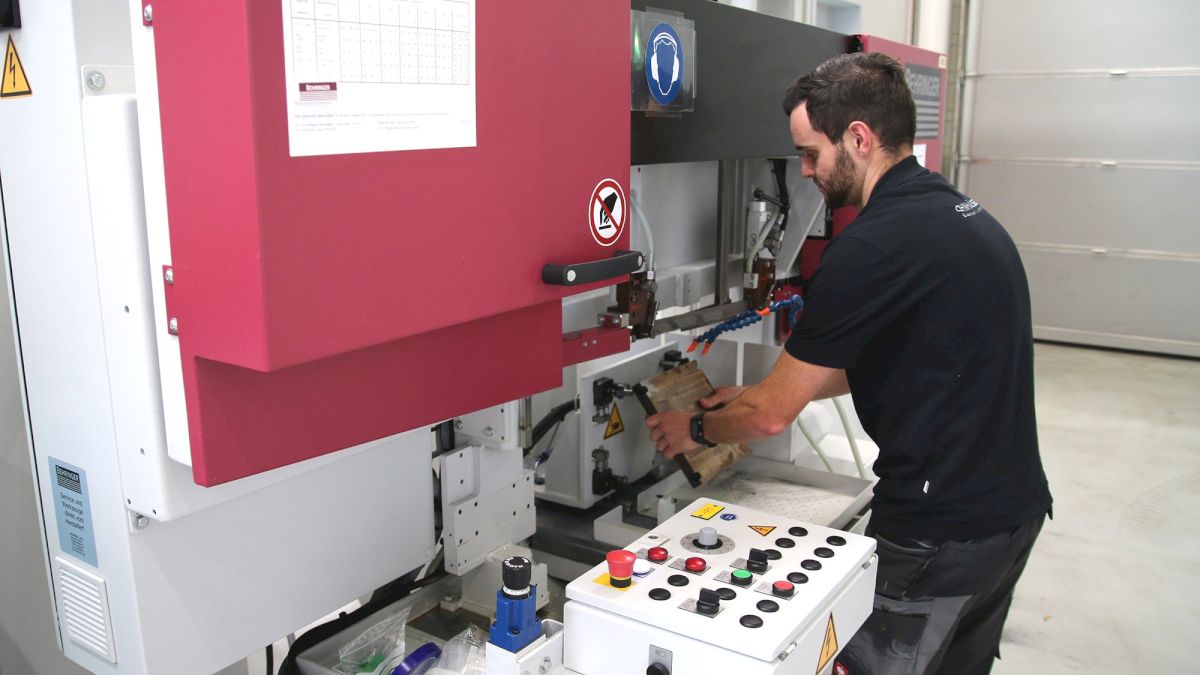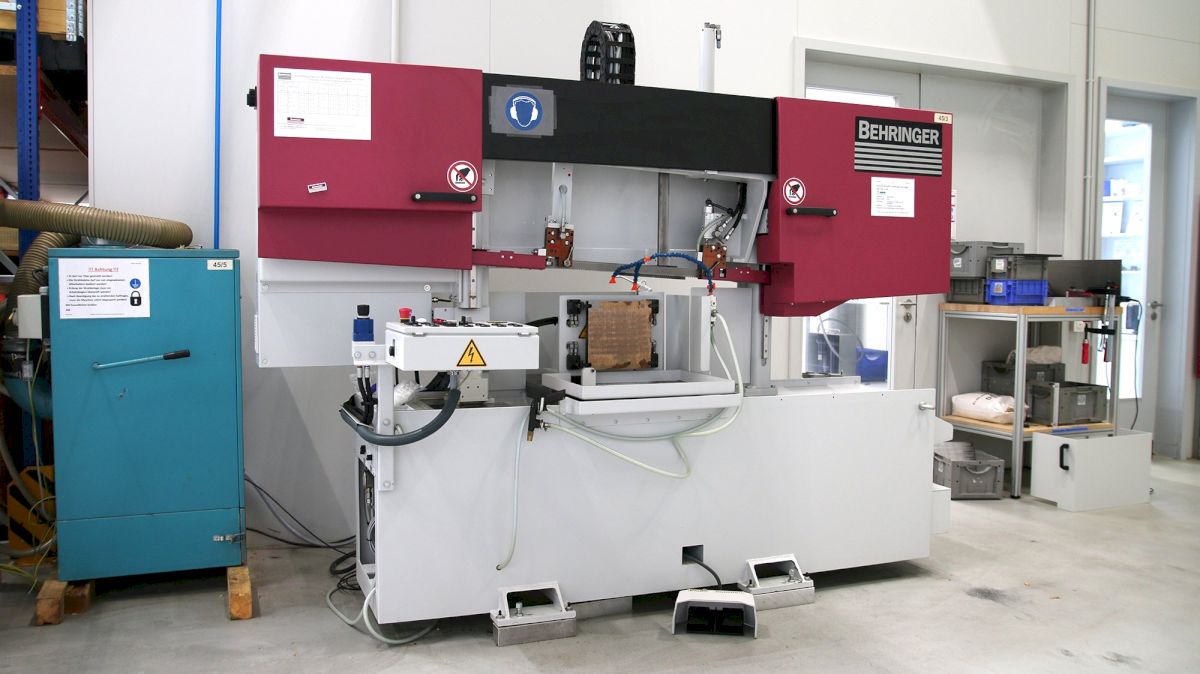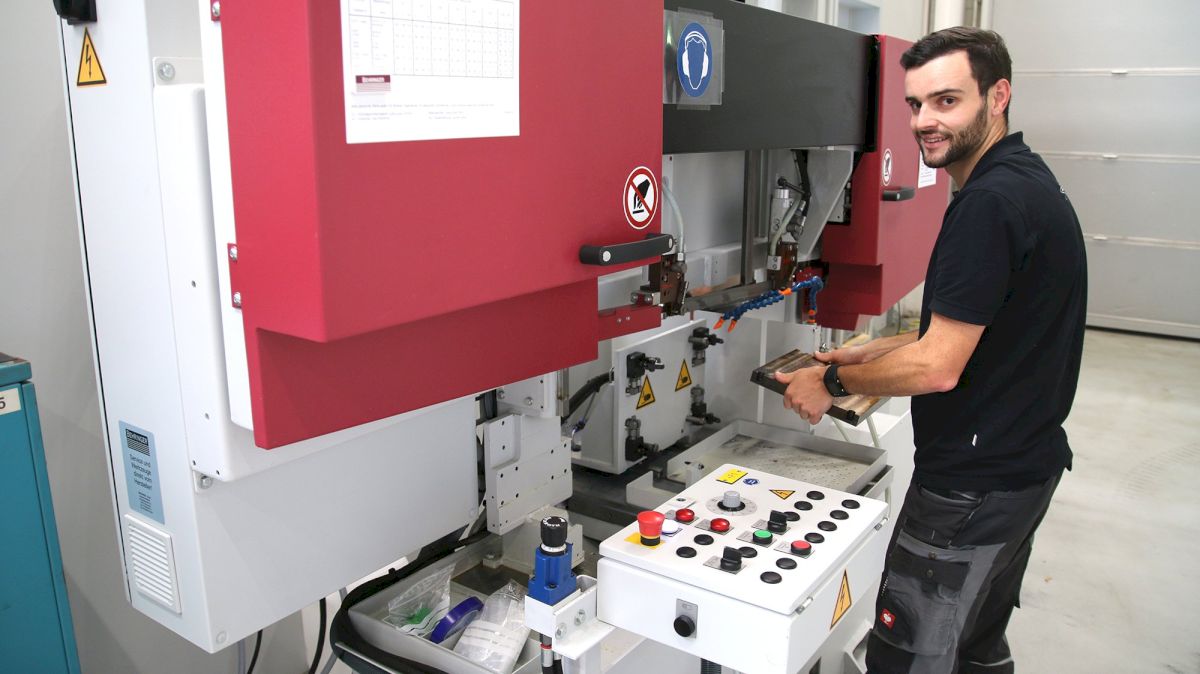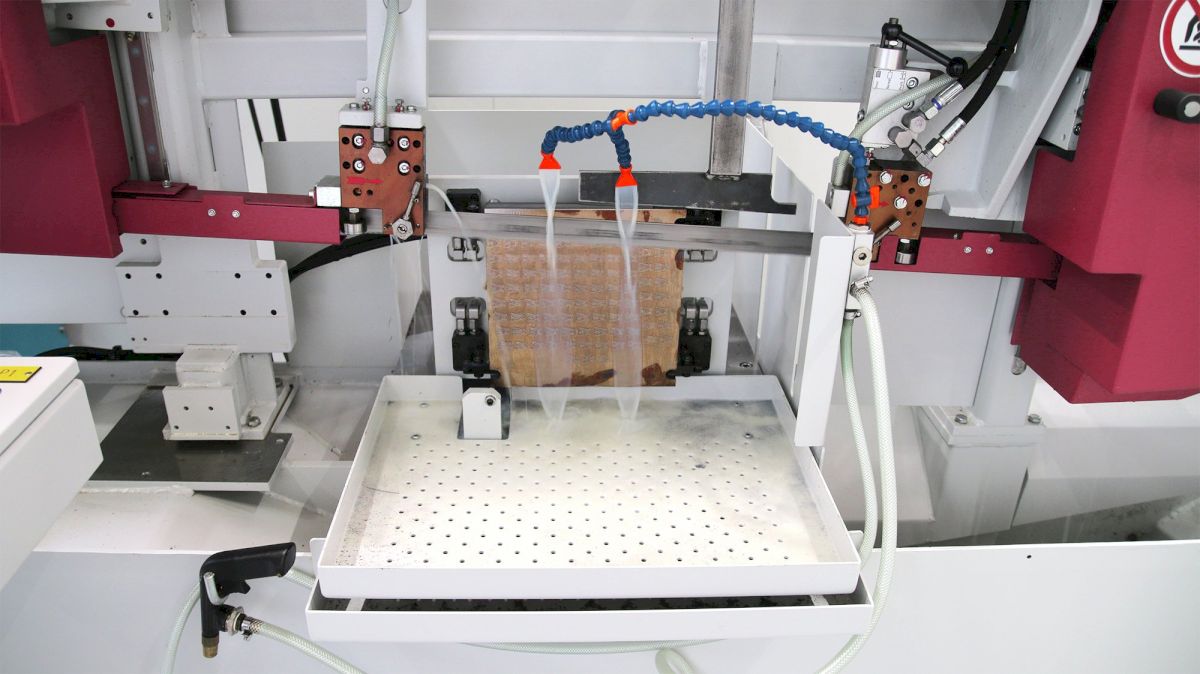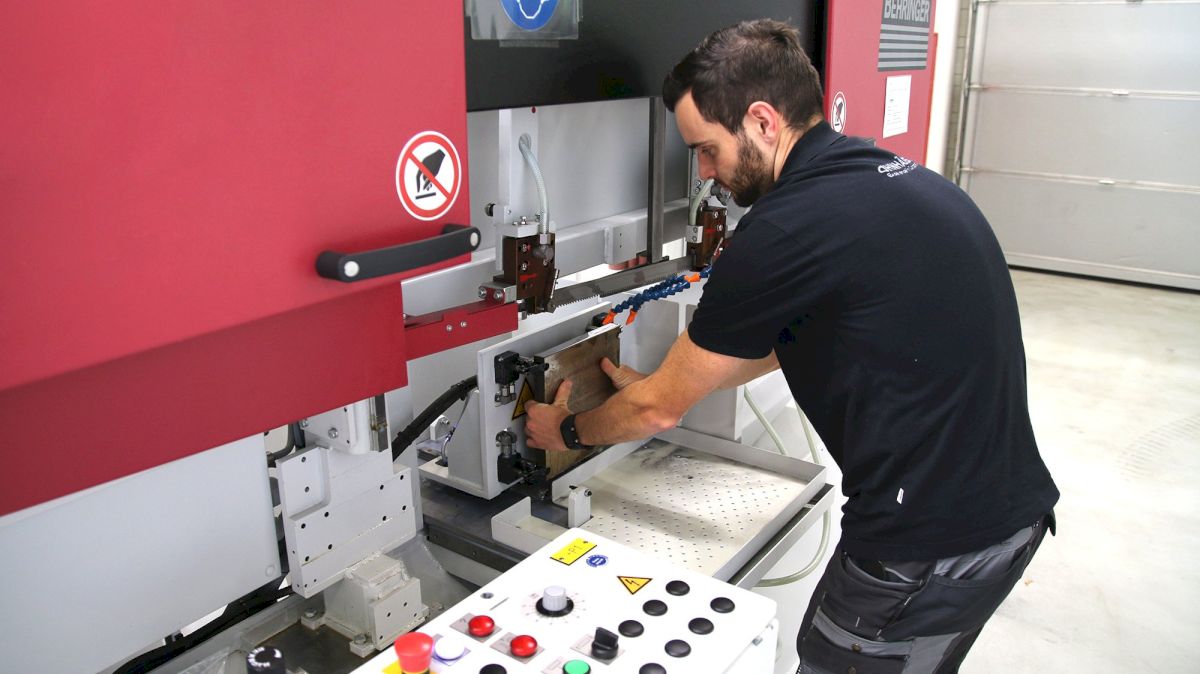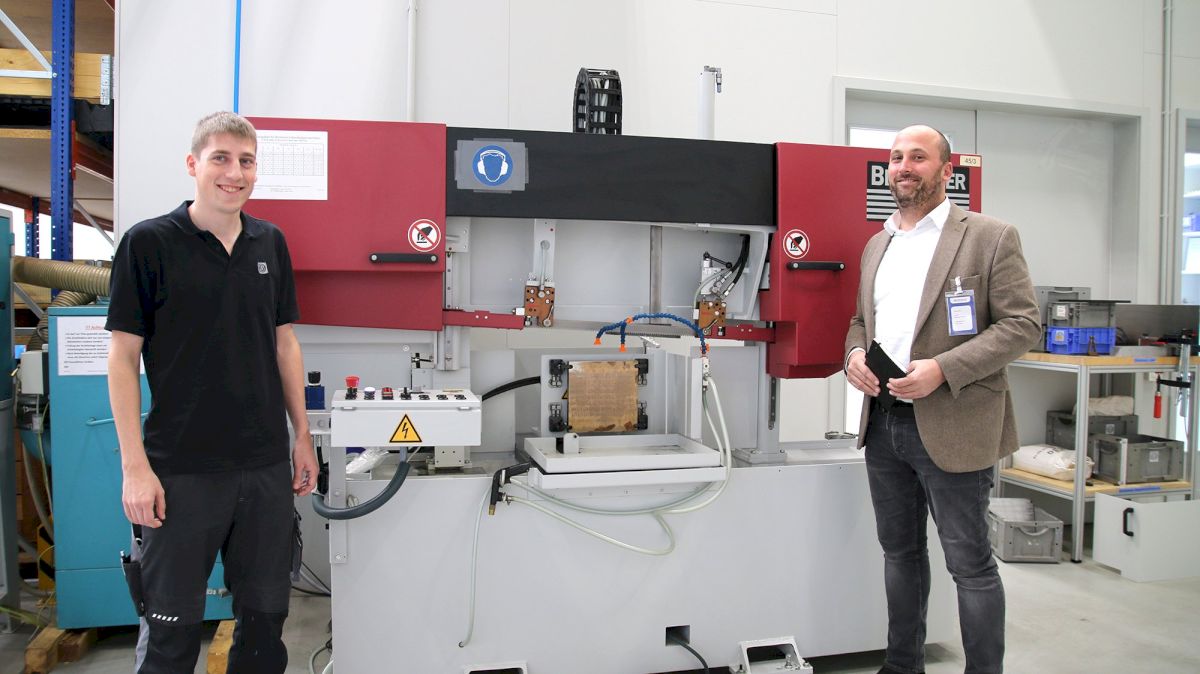BEHRINGER HBE320-523 3D and LPS-T 3D for additive manufacturing
Ohnhäuser GmbH have been using the 3D bandsaw to separate additively manufactured aerospace parts from the printing plate for quite some time.
In the last year, Behringer GmbH added two new models to its product portfolio with this new 3D series. The high-performance bandsaw machines were developed to separate additively manufactured parts of different shapes and sizes. Additive manufacturing of parts continue to gain a foothold, particularly in applications where typical production techniques reach their limits. One of the clear advantages of 3D printing technology is the seemingly limitless shapes and structures of the creations. Even a moving group of parts can be printed as a complete unit, so there is no need for post-production assembly.
Ohnhäuser GmbH from Wallerstein is primarily known as a contract manufacturer and premium supplier for the aerospace industry. To manage the demands of manufacturing bionically constructed parts, the company expanded its production methods to include additive manufacturing, AM for short. In the latest stage of development in 3D printing, Ohnhäuser is concentrating on the use of a special titanium powder, optimised for aerospace requirements. As a material, titanium boasts strength characteristics in the range of tempered steel with a comparatively low weight. An EOS M 290 printer is used to generate the 3D metal parts.
After additive manufacturing, the titanium parts must be separated from the printing plate. While carrying out research into a suitable separation process it became clear that only a saw system would make the cut. “We then contacted Behringer to ask what solutions our bandsaw manufacturer could offer” recalls Moritz Färber. “Ohnhäuser had been using a bandsaw machine from Behringer for several years, so we knew the company was a high-quality and reliable manufacturer of saw machines.”
Precision sawing of a range of materials
When it comes to highly-sensitive 3D printing, accurate separation of the part from the printing plate is essential. Deviations in the cut or drifting out of the cutting channel is not permitted, as this would damage either the base plate or the printed parts.
The HBE320-523 3D is based on the already established HBE Dynamic series. This impresses with its robust construction, energy-efficient drive system, and above all, its accurate sawing. It cuts the inserted materials with precision to a tolerance of tenths, whether it be steel, aluminium, nickel-based alloys, titanium or plastic. The bandsaw blades can also be quickly and flexibly changed to suit the material that is being sawn. All the machine’s blade-guidance parts are cast in Behringer’s in-house foundry. The grey cast iron dampens vibrations and reduces unpleasant background noise during cutting. All these factors have a positive effect on the sawing process. The result is high cutting performance and a long bandsaw service life.
Easy handling
The machine is designed for functional handling to support processes. Once the base plate has been clamped, it is quickly and precisely aligned for the saw cut using the measuring stop. The stop system is located on the printed side and works regardless of plate size. This eliminates the majority of the setting and alignment work.
In regard to the loading and clamping processes, Behringer caters to customers’ individual needs. “It is very important that we are flexible in this regard. The process often depends on the 3D printer design,” explains Rolf Bentz, Project Manager at Behringer.
Focus on safety at work
Some of the metal powders used in 3D printing have a tendency to self-ignite. After printing, the residual powder is removed from the finished parts, but powder which is embedded in supporting structures can pose a hazard. To separate these materials, the 3D saws from Behringer can be equipped with an enclosure which is connected to an extraction system. Metal dust, vapour and oil/aerosol mists that arise during the separation process can be directly extracted.
The cooling system should also be matched to the material to be sawn. Flood coolant is recommended for the majority of materials to ensure efficient sawing of the parts. The models in Behringer’s 3D series are equipped with a filter system which continuously cleans the metal powder particles from the coolant. However, when aluminium alloys are being processed, for example, reactions with the coolant (water-oil mixture) can occur and promote the formation of explosive hydrogen. Micro spray systems are suitable for such cases.
Impression
Behringer responds to individual customer requirements
The HBE320-523 3D has now been in daily use at Ohnhäuser GmbH for over a year. “We are very satisfied with this machine. The saw cut is precise and a solution-based approach has been taken with the material handling. We also enjoyed the open dialogue with Behringer, so that our machine could be optimally adapted to our machining process. Together we have developed a special, hydraulic quick clamping system for easily securing the printing plate to the fixture,” explains Moritz Färber.
The HBE320-523 3D can be used to process printing plates up to 300 mm x 300 mm. For sizes bigger than this, Behringer offers the LPS-T 3D which can accommodate printing plates up to 850 x 650 mm. When using a crane to load and unload the larger, heavier base plates, the vertical machine design with freely accessible machine table is the best choice.
